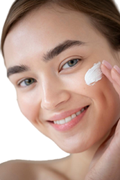
Removes dead skin cells for a more radiant look.
Chemical peels are a cornerstone in dermatological treatments, offering solutions for various skin concerns by exfoliating and renewing the skin. Peels range from mild to deep, targeting issues like acne, pigmentation, and fine lines. These treatments are widely used for their ability to rejuvenate the skin and enhance texture.
Introduction to Black PeelThe Black Peel is a specialized treatment utilizing a mixture of organic acids, including black vinegar and salicylic acid. It is designed to deeply exfoliate the skin, remove impurities, and stimulate the growth of new, healthy skin cells. The unique combination of ingredients makes it effective for treating acne, uneven skin tone, and large pores.
Why Dermatologists Prefer Black Peel?Dermatologists recommend the Black Peel for its powerful yet gentle exfoliation, suitable for various skin types. It's effective in reducing acne and inflammation, unclogging pores, and improving skin texture. The peel's anti-inflammatory properties also make it a safe option for sensitive skin types.
Key Benefits of Black PeelThe Black Peel is ideal for individuals with oily, acne-prone skin, or those dealing with pigmentation issues. It's also suitable for those with sensitive skin, as the formulation is less likely to cause irritation.
Expected Downtime and Symptoms
Downtime is minimal, typically ranging from 1 to 3 days. Patients may experience mild redness, peeling, and sensitivity post-treatment.
Recovery involves gentle skincare, including moisturization and sun protection. Full results are usually visible within a week, with improvements in skin texture and tone.
Best Results for Black Peel TreatmentThe Black Peel is a chemical peel that uses organic acids to exfoliate and rejuvenate the skin, particularly effective for acne and pigmentation issues.
It exfoliates the outer layer of the skin, removing dead cells and impurities, and stimulates new cell growth.
Generally, yes, but it's especially beneficial for oily and acne-prone skin.
The procedure usually takes 30 minutes, with noticeable results in a week.
Minimal side effects include mild redness and peeling. Proper aftercare minimizes these effects.
Depending on skin type and concerns, treatments can be done every 4 to 6 weeks.
It’s recommended to avoid makeup for at least 24 hours post-treatment to allow the skin to breathe and heal.
Avoid using other exfoliants or harsh skincare products a few days before your appointment.
Use gentle, hydrating skincare products and apply sunscreen daily to protect the skin.
Initial improvements can be seen within a week, with continued improvement over several weeks.